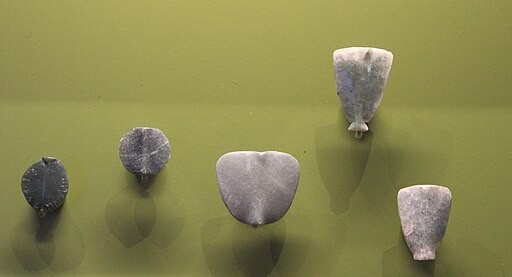Thousands of years ago, pastoralists living on the shores of Lake Turkana in East Africa buried their dead in communal cemeteries marked by stone circles and pillars. These places tell the mortuary traditions of the people, which reflect their reactions to environmental changes.

The burial sites appeared when a major environmental and economic change occurred in the region. About 9,000 to 7,000 years ago, the Sahara received enough rainfall to sustain populations of fisher-hunter-gatherers and pastoralists. As the area got dry, these groups were forced to move east and south.
Collection of Stone Beads in Turkana
The stone bead tradition was a critical practice at the Turkana pillar sites, as suggested by the number of beads in the burials. Therefore, knowing the range of materials people use to understand the past environmental and social landscape is crucial. The patterns in the composition of the bead collection can also indicate the communication and exchange of objects across the region.
Researcher Carla Klehm led the first comprehensive mineralogical investigation of the Turkana stone beads. Their study focused on discovering the types of minerals and rocks used by early herders in making adornments, hoping to get insight into the role of artifacts in the society that used them.
In this study, six pillar sites were excavated by archeologists. Three sites - Jarigole, Manemanya, and Lothagam North - have yielded substantial assemblages of stone beads. After sorting the stone beads by location and their mineral and rock types, the researchers identified the mineral characteristics of 806 stone beads.
Remains of hundreds of people were found in the pillar sites around Lake Turkana, many of whom were ceremonially interred under large, circular platform mounds. Most of these individuals wore remarkable colorful stone beads, which were used as part of earrings, bracelets, and necklaces. The personal ornaments include rocks and minerals such as green talc, purple fluorite, deep red chalcedony, soft pink zeolite, and blue-green amazonite.
Thearly herders obtained the e materials used in making them from local and distant places. After the stone beads were shaped into personal adornments, they were placed with the dead in numbers and combinations that differed by individual and place. Experts do not yet fully know what this means, but they plan to continue the research to explore the lives and legacies of these herders as they navigate new environmental and social landscapes.
READ ALSO: Ancient Beads Made From Meteorites Could Reveal The Prehistoric Culture
Significance of Beads in Human History
Humans have been practicing the tradition of making and wearing beads for more than 140,000 years. Beads are considered one of the oldest forms of symbolism and are usually used as adornment in every culture.
Wearing something on the body is an expressive choice with different meanings. It could indicate status or role in society, acknowledgment of friendships and bonds, and protection. In short, personal ornaments such as beads may signify a shared cultural understanding.
RELATED ARTICLE: Stone Age Archaeological Ornaments Reveal How Slate Rings from 6,000 Years Ago Symbolize Connection
Check out more news and information on Beads in Science Times.














